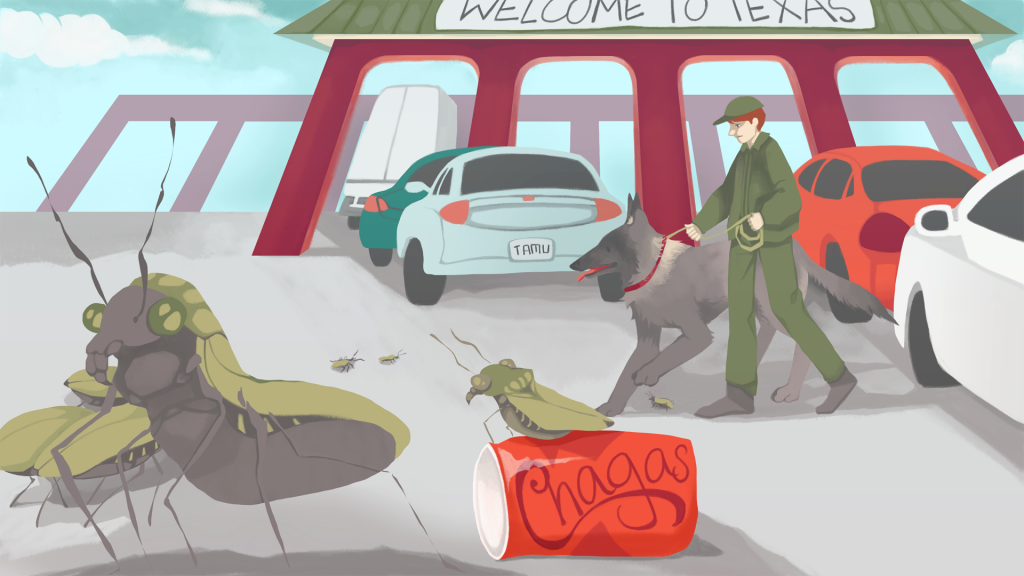Study will examine how Chagas affects border security dogs

Researchers at the Texas A&M College of Veterinary Medicine & Biomedical Sciences, in collaboration with the Institute for Infectious Animal Diseases (IIAD) at Texas A&M, have received funding for the third phase of research from the U.S. Department of Homeland Security (DHS) to secure the health of dogs working at the United States and Mexico border.
With this new wave of funding, Sarah Hamer, an associate professor in the Department of Veterinary Integrative Biosciences (VIBS); Alyssa Meyers, one of Hamer’s doctoral students; and a team of researchers are taking an in-depth look at dogs working along the U.S.-Mexico border to further study the impending health implications of Chagas disease and the effect this disease has on the canines’ ability to work.
Chagas disease, caused by the protozoan parasite Trypanosoma cruzi, is transmitted through kissing bugs, or cone-nose bugs, and can cause acute or chronic heart disease or death in dogs and humans.
DHS maintains more than 3,000 working dogs across the country, including the security dogs at the airports, customs and border protection dogs, Coast Guard dogs, federal protective service dogs, and secret service dogs, Meyers said.
“These are highly valuable dogs, often selected for their drive and pedigree, and, unfortunately, our initial research found that up to 18 percent of the working dogs along the Texas-Mexico border were positive for exposure to T. cruzi, the Chagas parasite.”
While Chagas disease has long been known in Central and South America, there is now increasing awareness for the disease in the southern United States where kissing bugs occur.
“Though Chagas is an emerging disease that we know is in Texas and know can infect dogs and people, we don’t know the full extent of the impact or spread of the disease,” said Melissa Berquist, director of IIAD, a U.S. Department of Homeland Security Science and Technology Center of Excellence and a unit of Texas A&M AgriLife.
“By gaining a better understanding of the geographic areas where dogs are becoming exposed and the prevalence of exposure, we are gaining critical information for health management and vector control programs in order to decrease transmission within the DHS

